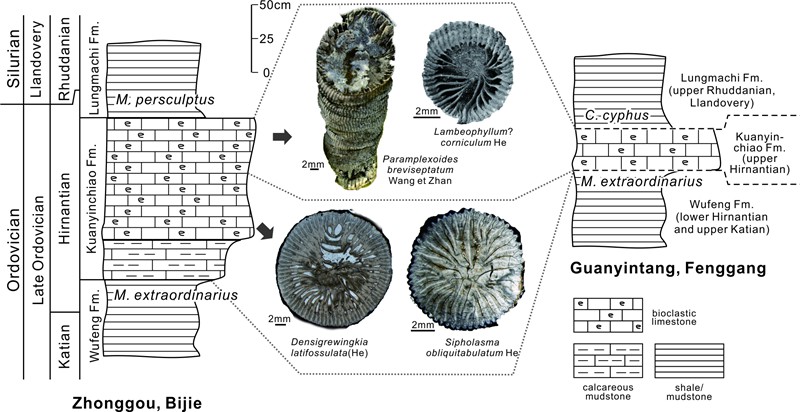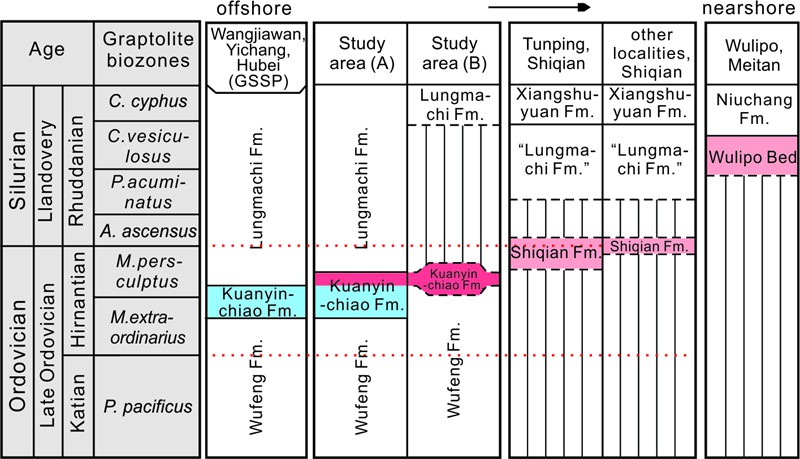The Kuanyinchiao Formation (Hirnantian, Upper Ordovician), yielding the typical Hirnantia fauna, has commonly been accepted as representing cool-water sediments deposited during the glacial interval in the Hirnantian Global Boundary Stratotype Section and Point (GSSP) region of South China.
Recent investigation conducted by Dr. WANG Guangxu from Nanjing Institute of Geology and Palaeontology, Chinese Academy of Sciences and his colleagues reveals that the uppermost carbonate-dominated part of this formation yields a warm-water rugose coral fauna with Silurian affinities at many localities of northern Guizhou Province, which substantially differs from the underlying cool-water fauna. This suggests that these carbonates were probably postglacial warm-water sediments, rather than having formed during the Hirnantian glacial interval as previously thought. Such a conclusion is consistent with the evidence from the associated brachiopod fauna, i.e., the Dalmanella testudinaria – Dorytreta longicrura community, which is similarly distinct from the underlying typical Hirnantia fauna. The sedimentological data show warm-water features at the same level (e.g., the presence of oolitic grains), also supporting this new interpretation. Recognition of these postglacial carbonates and fossils adds to a growing list of near-contemporaneous strata of latest Ordovician age in South China that, due to their thinness and limited extension, have previously been overlooked or misinterpreted. Increased awareness of these strata should result in further discoveries that will underpin a better and more accurate understanding of the end-Ordovician mass extinction.
Related information of this paper: Wang G. X., Zhan R. B., Percival I. G. 2016 (published online). New data on Hirnantian (latest Ordovician) postglacial carbonate rocks and fossils in northern Guizhou, Southwest China. Canadian Journal of Earth Sciences, (doi: 10.1139/cjes-2015-0197)

Stratigraphic correlation of the Ordovician–Silurian boundary successions in the study area. Representative rugose corals from the Kuanyinchiao Formation are illustrated with their stratigraphic levels indicated.

Correlation of carbonate rocks across the Ordovician–Silurian boundary on the Yangtze Platform of South China.
